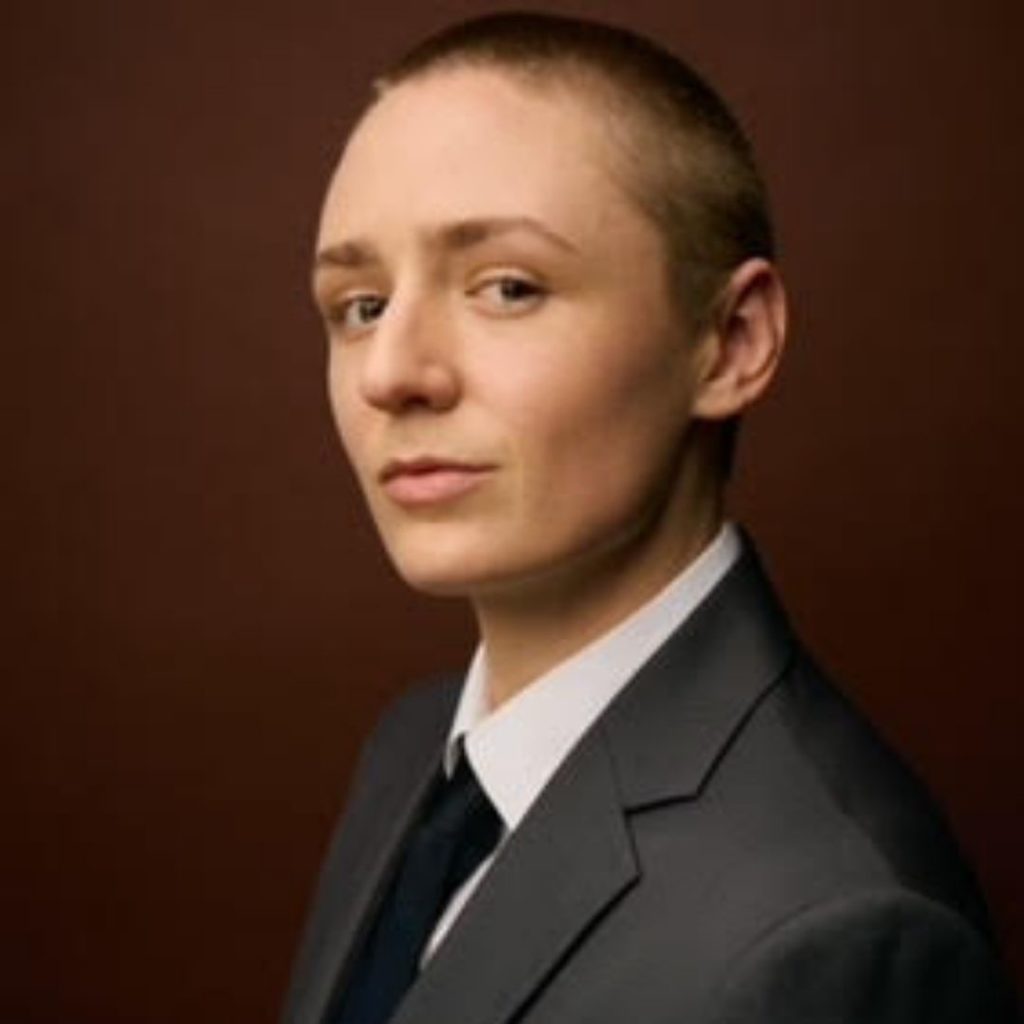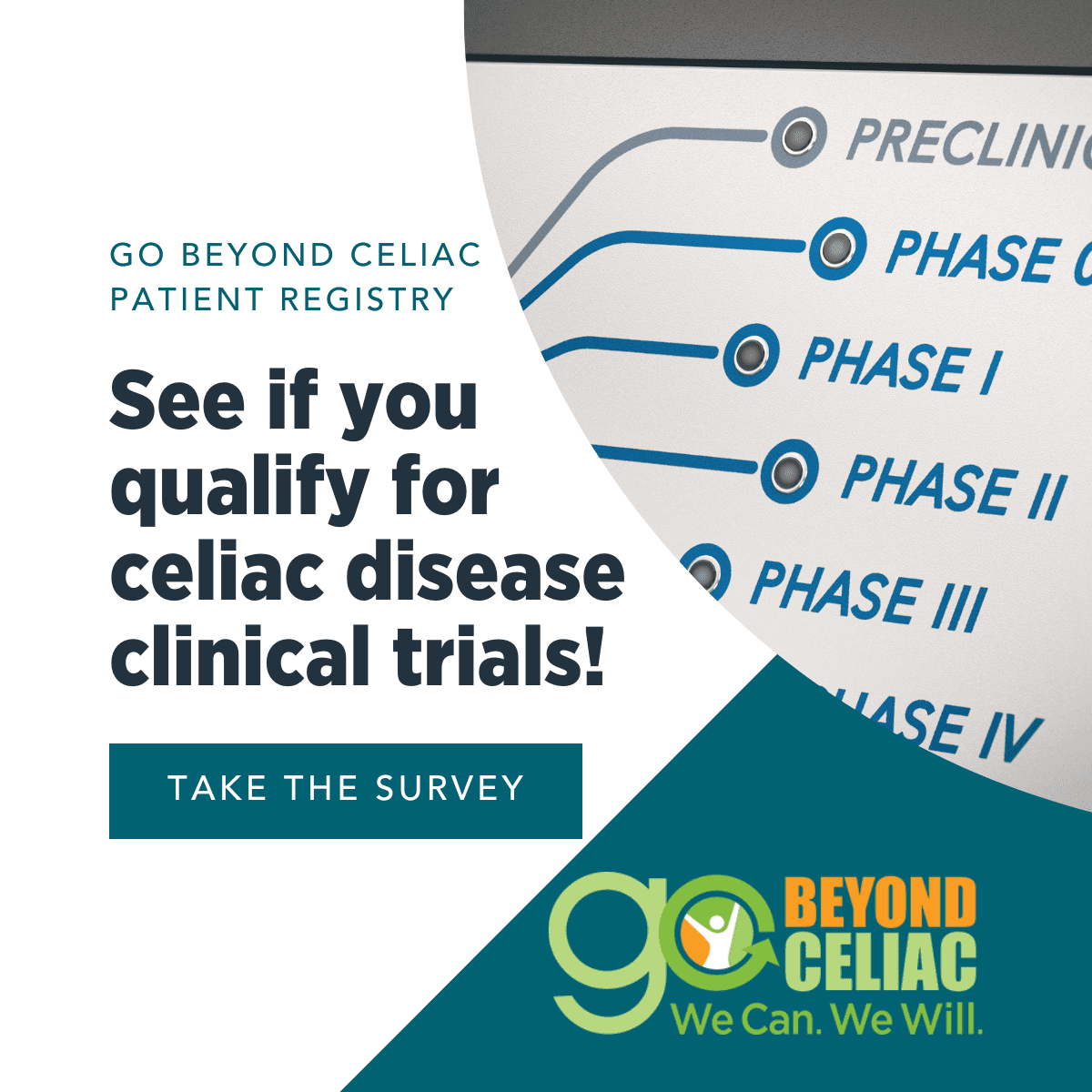“I want to be an ambassador so other people have someone to come to for community and support, but also reliable information and knowledge.”
Meet Hayden Bishop (Los Angeles, California)
Originally from South Carolina, Hayden’s first sign of celiac disease was a rash. At the time, Hayden lived in Atlanta and was competing professionally in Brazilian jiu jitsu, though she notes her symptoms likely started before then. “While my journey to diagnosis started in my mid-twenties, growing up I had stomach issues and other autoimmune experiences that I think were connected with celiac disease, but I didn’t know anything about it at the time.”
After visiting a series of dermatologists who simply prescribed creams and dismissed the rash as eczema, Hayden finally insisted on testing a sample, which came back positive for dermatitis herpetiformis, a skin condition associated with celiac disease. “From that point, I just cut out gluten completely and treated myself as if I had celiac disease,” says Hayden. “It was probably three months later that I actually saw a GI doctor (gastroenterologist). They did an endoscopy and said, ‘It’s definitely celiac.’” Note: it’s important to stay on a regular diet that contains gluten before your endoscopy, even if your blood tests were positive. Immediately going gluten-free can interfere with results. Read more on our diagnosis page.
From there, Hayden’s focus turned to learning how to navigate the gluten-free diet. With little help from her diagnosing physician, Hayden looked to celiac disease organizations for guidance on reading labels, knowing which foods to avoid, and understanding her new diet. Not only did the transition prove challenging, but so did the education of others. “I think the biggest challenge is communicating what it is to other people—and you can’t not communicate about it with other people. I mean, you eat at least three times a day, not including snacks, and you’re not always at home. And even when you’re at home, you’re with other people. There’s other people in the kitchen. There’s other things around. It’s really difficult to explain that it’s not a choice, and, when I’m being really cautious, like ‘Did you wipe the counter down?’ it seems like it’s difficult for people to grasp that that these really small amounts can affect you.”
Despite her efforts, a year after diagnosis symptoms persisted, so Hayden sought out a second doctor for further testing. “They did another endoscopy and blood tests again, and I got sent to a dietician. At the time, I was not aware that one crumb of bread, one crumb, can cause a lot of damage. I remember the dietitian showing me a picture of a piece of bread and asking, ‘How much of this do you think you can eat before it’s damaging?’ And I was like, ‘I don’t know—one bite?’ She said, ‘No. One crumb. One crumb.’”
Yet Hayden’s symptoms continued to worsen despite strict adherence to the diet. Eventually, Hayden was diagnosed with refractory celiac disease, a rare form of celiac disease where the body doesn’t respond to the gluten-free diet (which is currently the only treatment for celiac disease). “I was having a lot of symptoms: I was falling asleep mid-day because I couldn’t stay awake; my brain was foggy; I had a constant pressure and pounding in the back of my head; and had nausea and bloating every single day. The GI doctor just said “Well, just keep going, and we’ll see.’”
After months of an extremely strict diet of raw foods and immunosuppressants, Hayden finally entered remission and remains closely monitored to this day. Despite the challenges, Hayden feels that her diagnosis has brought good things into her life, too. “For one, having to advocate for myself has really put me in a place where I have to go, ‘This is what’s good for me, and I don’t care how you’re going to respond to it. This is what’s good for me, and I’m doing that no matter what you say or think about it,’ Secondly, I think there’s a lot of additives and things that are really unhealthy about the way we’ve been taught to eat. Having celiac disease has created an awareness of what I’m actually putting in my body.”
Hayden brings her passion and positivity to the Reach Beyond Celiac Ambassador Program, and is determined to help anyone feeling alone or unsupported. “I think the biggest thing that drew me to be an ambassador was how alone I felt. In this whole journey I had good doctors and good dieticians, and even dieticians that had celiac disease, but the doctors can only do so much for you. They only have a certain amount of time. They have a lot of patience, but they’re not your friends or your family. They don’t keep in touch like, ‘How are you? Have you been checked on? How’s it going?’ They don’t do any of that, and your friends and family are kind and supportive, but they don’t understand celiac disease, and they don’t necessarily take the time to fully grasp it either, especially when you’re an adult who has it. So I really wanted a place to come where there are other people who have celiac disease, and not just have it, but who fully understand what it is.”
As an ambassador, Hayden is excited and eager to reach out to the community and continue driving a cure for celiac disease. “Let’s face it, with the world we live in, you can’t always eat the food you make. Sometimes you have to travel. Sometimes you have to do something, and you have to eat something someone else makes, and the stress and worry around that is just unfathomable. There’s just nothing that compares to it, and there’s nothing that can relieve that, except for a cure.”
Donate here to support our Ambassador program.



